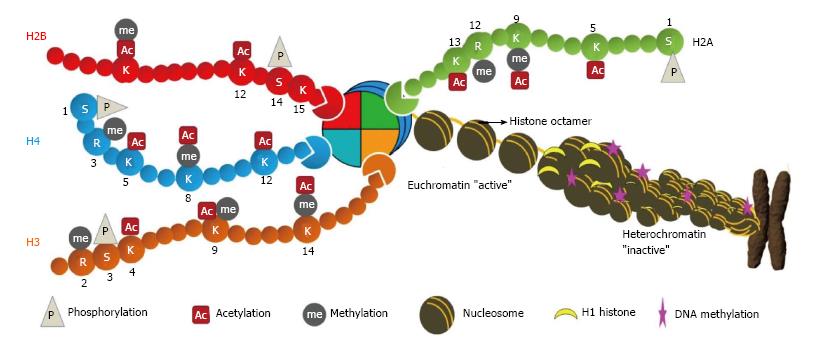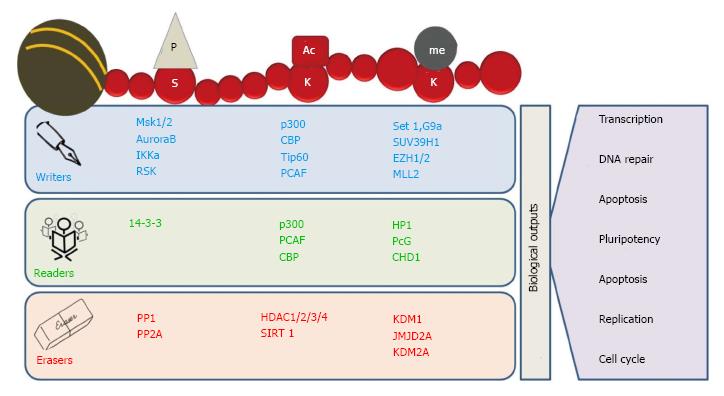Copyright
©The Author(s) 2015.
World J Biol Chem. Nov 26, 2015; 6(4): 333-345
Published online Nov 26, 2015. doi: 10.4331/wjbc.v6.i4.333
Published online Nov 26, 2015. doi: 10.4331/wjbc.v6.i4.333
Figure 1 Chromatin architecture.
The DNA is wrapped in two turns around histone octamers (nucleosomes) at intervals of about 200 bp along the DNA. Histones within the nucleosome (two each of H2A, H2B, H3 and H4) undergo numerous post-translational modifications at their N-terminal tail which protrudes from the nucleosome. Further folding of nucleosome with linker histone H1 creates a spiral structure, the heterochromatin leading to metaphase chromosome. These modifications directly regulate the chromatin structure and thus DNA-mediated cellular processes. The diagram indicates some modifications at specific residues: M: Methylation; A: Acetylation; P: Phosphorylation.
Figure 2 Readers, writers and erasers of chromatin marks.
Histone modifications are highly dynamic in nature. The “writers” like histone acetyltransferases (HATs), histone methyltransferases (HMTs) and kinases add specific marks on specific amino acid residues on histone tails. These marks are identified by various proteins containing specific domains such as bromodomains, chromodomains and Tudor domain containing proteins called “readers”. The written marks are removed by “erasers” like histone deacetylases (HDACs), lysine demethylases (KDMs) and phosphatases. In addition, removal and identification of these post-translational modifications on histone tails regulate various biological processes, including transcription, DNA replication and DNA repair.
- Citation: Khan SA, Reddy D, Gupta S. Global histone post-translational modifications and cancer: Biomarkers for diagnosis, prognosis and treatment? World J Biol Chem 2015; 6(4): 333-345
- URL: https://www.wjgnet.com/1949-8454/full/v6/i4/333.htm
- DOI: https://dx.doi.org/10.4331/wjbc.v6.i4.333










